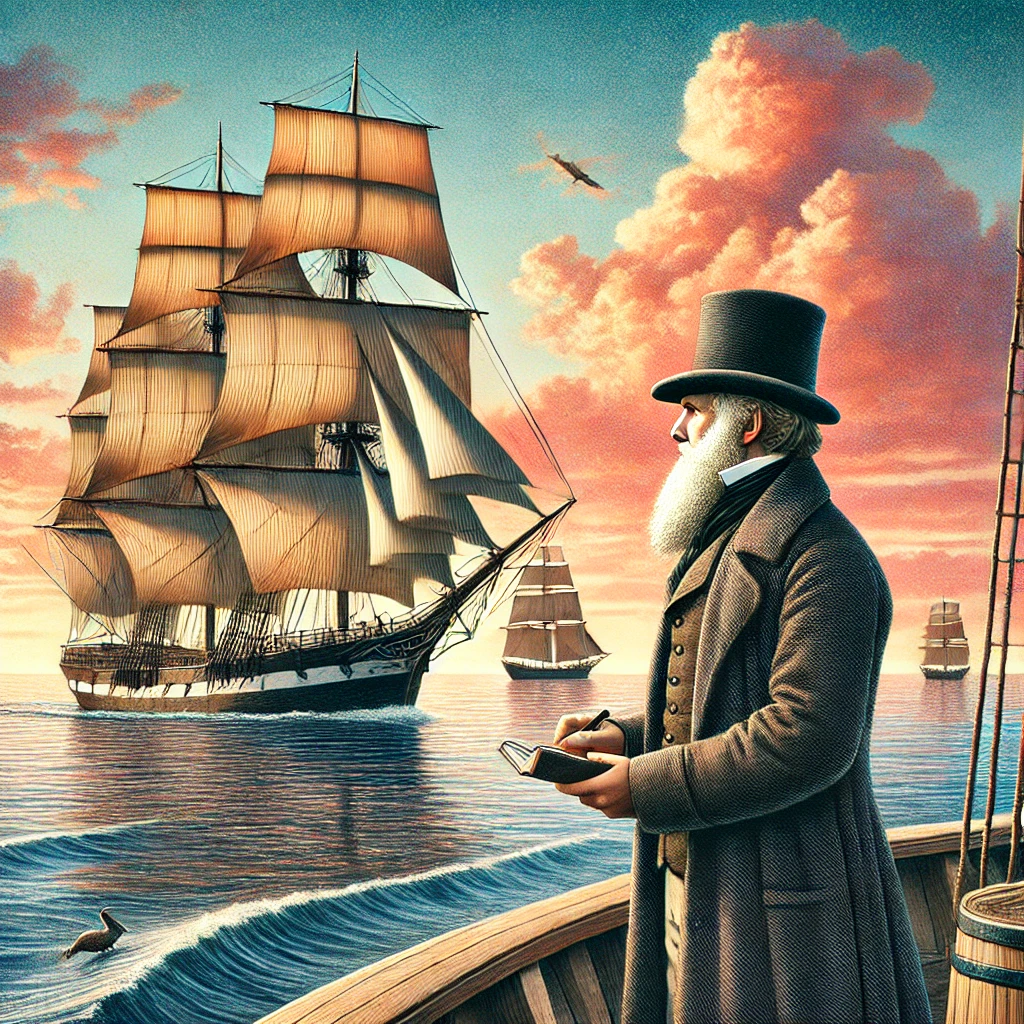A transformative voyage commenced on December 27th, 1831, as naturalist Charles Darwin set sail on HMS Beagle. This journey laid the groundwork for his groundbreaking theory of evolution, detailed in On the Origin of Species. Over the course of nearly five years, Darwin’s observations of diverse ecosystems, species, and geological formations would revolutionize how we understand life on Earth. The voyage, which initially appeared to be a routine expedition, ultimately became one of the most significant scientific undertakings in history.

The Journey Begins
HMS Beagle, under the command of Captain Robert FitzRoy, departed from Plymouth, England, on what was primarily a surveying mission for the British Navy. The purpose of the voyage was to map the coastlines of South America and chart key navigational routes. Charles Darwin, a 22-year-old aspiring naturalist, was invited to join the expedition as a companion to FitzRoy and to document the region’s natural history.
Darwin spent much of the voyage collecting specimens, recording observations, and analyzing the plants, animals, and fossils he encountered. From the lush forests of Brazil to the stark volcanic landscapes of the Galápagos Islands, Darwin meticulously cataloged nature’s diversity. The patterns he observed among species in isolated environments would later fuel his revolutionary ideas.
Discovering Patterns in Nature

The Galápagos Islands, located off the coast of Ecuador, became one of the most pivotal stops on Darwin’s journey. Here, he noticed that species of finches varied from island to island, each adapted to its unique environment. For example, beak shapes differed depending on available food sources, suggesting that species adapted over time to survive. These observations sparked Darwin’s curiosity and planted the seeds for what would eventually become his theory of natural selection.
Darwin’s findings were not limited to finches. He also studied tortoises, iguanas, and various other species that showed similar patterns of adaptation. By comparing fossils of extinct animals with living creatures, he began to see evidence of gradual changes over long periods of time. This challenged the prevailing notion of a static, unchanging natural world and opened the door to a new understanding of biology.
The Lasting Impact of Darwin’s Voyage
The insights Darwin gained aboard HMS Beagle eventually culminated in his 1859 publication, On the Origin of Species. In this groundbreaking work, Darwin introduced the concept of evolution by natural selection, arguing that species change over generations through the survival and reproduction of individuals best suited to their environment. His theory challenged existing religious and scientific beliefs and sparked widespread debate.
Darwin’s work has had a profound and lasting impact on science, influencing fields ranging from biology to genetics, anthropology, and paleontology. Evolution remains a cornerstone of modern biology, helping scientists understand the interconnectedness of all life on Earth, as well as the mechanisms driving adaptation and diversity.
Even today, Darwin’s journey on HMS Beagle serves as a reminder of the power of observation and curiosity. His work continues to inspire scientists, educators, and explorers around the globe, pushing the boundaries of human knowledge.
A Voyage That Changed the World

Charles Darwin’s voyage on HMS Beagle was far more than a simple exploration of distant lands. It was a turning point in human understanding of life and nature. What began as a young naturalist’s opportunity to see the world became one of the most significant scientific journeys in history. By questioning established norms and daring to seek answers through evidence, Darwin forever changed the way we see our origins and the natural world around us. His voyage remains a testament to the transformative power of science and discovery.
